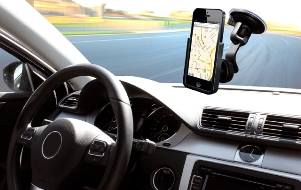A word of caution – this month’s Phonephiles locuses on what’s new about the phone, rather than commenting on the standard features, because quite honestly, there are a lot of new things going on in the N9. The price of Nokia N9 is round about 500 to 600 US dollars or 49,900 in PK Rs. Now lets have a look on the Nokia N9 features, specifications and comprehensive user experience.
Whack in the box
The Nokia N9 in a small, brick-like box, with the usual add-on – manuals, a connecting cable, headset, and an odd-looking two-pin plug that charges through the connecting cable. Biggest surprise-the N9 comes with pretty durable mobile phone housing. Now, I am a sucker for surprises, so Nokia scored some cool brownie points for the accessories. There is, however, no HDMI TV out (sad face).
It’s Got the Look
Look-wise, the N9 is a complete beauty. Since the phone runs the MeeGo Operating system, which is a touch-only OS, it’s not surprising to see Nokia do away with hard keys from the phase of the phone. But the lack of a home key is quite a departure for Nokia. There are some major design overhauls which may not be the most conventional moves; but who said anything about the N9 wanting to be conventional? The font of the phone belongs slowly to the slightly-elevated CORNING Gorilla Glass AMOLED capacitive screen.
Perhaps it is because the screen isn’t embedded in the body that edges gather a lot of dirt. Also, the fact that screen is a grace/dust magnet doesn’t go down well with chronic screen-cleaner like me. The front camera is placed at the button right, the logic of which is (at the moment) beyond me; but more on that later. Regardless of everything, (when clean) the font of the N9 is impressive.
The button of the handset is occupied by the speaker grill, which looks good but is as flat as the surface, so it gathers a lot of dust. The right side boasts the volume rockers and the power/lock button. I should point out over here that the buttons are extremely flat and one you but the phone in the rubber housing that comes with the handset; working with those buttons becomes quite tricky. Thankfully, volume can be controlled on screen as well.
Now, the N9 comes with a non user-replaceable battery (ala i-Phone), which means that the back can focus on looking good. Spare the screen and the metallic hard-keys on the side, the phone is made completely out of single piece of premium-quality poly carbonate, which has a embossed finish. Positioned almost dead-centered is a 8 MP camera with Carl Zeiss Lenses and dual LED flash. The top of the N9 is fascinating to say the least. It has the 3.5mm audio port at one end, and next to it, it has two plastic doors. One open when you press the nub to give you the micro-USB port, and the other opens when you sight the notch. This one opens like a drawer for a micro-SIM. Yes, you read the right-micro-SIM.
The shocker
I will be honest- the micro-SIM really caught me off guard. Hasn’t Nokia is always been all about smooth transitions, and more importantly, convenience? Isn’t that exactly why Nokia has such loyal user-base? Now I am all for innovations; but some time when I buy a really fancy phone, is just want to pop in my (ordinary-sized) SIM and get down to business. I don’t want to worry about cutting up my SIM to fit into a new phone, or go all the way to the [your network providers name] business centre, pay an additional amount to get my existing SIMs mini-me. This got me thinking, why did one of the leading mobile phone companies in the country opt to go for the micro-SIM? The fact that the phone costs around USD 560 automatically cuts your target market. Of that market, only a small fraction even understands what micro-SIM is? Anyway, I grudgingly cut my SIM and put the phone to the test.
MeeGo be all different
New operating system are always fun to review, because no matter how much you read about them, using them is completely new experience, and MeeGo is no different. Based purely on its interface (UI), Android operating system user may be more accepting of MeeGo then they are of symbian. It offers a more interactive and organize environment, unlike symbian, which is more mechanical and orthodox. But there are few oddities along the way. First, there is no home screen. So save the wall paper, you can’t really customize the look and feel for your hand set. Then again who wants to put up with unimportant thing like creating shortcut like priority apps, and customizing the appearance of the phone-right?
Thought this is not relevant to MeeGo, I deem it necessary to appreciate the display of N9. The Gorilla Glass and the display seem to be almost glued. As a result, the icons on-screen appear as though they are directly on the Glass. The color and contrast of the screen and incredible haptic feedback made my fingers break into a dance. The sunlight visibility is also pretty good, so at the minimum brightness (when the screen was free of all the grease marks and finger prints). I has full view of the display in broad sunlight. That being said, the screen is always awfully reflective, which I found slightly off-putting. Coming back to MeeGo, the N9 obviously relies heavily on gesture and screen transition. I feel that Nokia is still learning the ropes on how to do without a Home key, because some gestures were very unintuitive. Case in point: I had to keep reminding myself, away from the edge for scrolling; from the edge, minimize/exit.
When you unlock the phone you are welcome by the wallpaper screen that hosts the clock. Swiping the screen in any direction leads you to the menu screen, which is reminiscent of Symbian Anna and can be re arranged. The screen swipes or a tricky deal, but after using a phone for a couple of hours, you get the hang of swiping choreography routine, as I call it. Others can resort to the user guide app available. There are three main screens- the app mini screen, another that displays all the running apps and the weather-calendar screen, which is filled with news feed from social networks (when synced). On most occasions, the absence of the home keys goes by un-noticed; but it hits you like a wall of bricks when you want to exit an application. The N9 uses a top-down swipe action to close an application; you do the opposite of that to minimize the apps, which doesn’t feel natural. I know, for people with short attention spans the gestures are a whole lot of information to retain. But you just have to deal with it, and find humor in the fact that it’s a “u-need-to-be-smart” phone. Get it?
User Experience
The N9 is powered by one GH processor which runs the MeeGo OS (HARMATTAN). Screen transition are fluid, and multitasking smooth but loading of apps is slightly sluggish; I found myself growing impatient waiting for some screen to load. The lack of a memory card slot is also something worth mentioning. Though the 16 GB phone memory should suffice, the option of an SD card would have given user more control of their data and allowed data portability between devices.
Calling and messaging
Calling and messaging on N9 is, dare I say, interesting making calls is basic which means no smart dialing or fancy call options. But its messenger scores some bonus points. While composing a message is pretty straight forward, the message inbox of N9 allows you to integrate conversations from the multiple platforms, including Skype and Facebook.
Camera and connectivity
The camera and connectivity on the phone are nothing to write home about. In case of former, I confess I am still wondering why I couldn’t use the front camera to take any pictures; so it remains untested for this review, and its placement irrelevant. I should, however, at that 8MP camera produce very odd results on default settings, the camera took picture that were extremely dark when set on automatic. Browsing the gallery was also unintuitive, because every time I would swipe to scroll for the next image, I would accidentally minimize and leave gallery like I said, you need to be extremely cautious about scrolling on N9, because the screen gestures cause of a lot of accidental commands. On the experience front my fingers were thoroughly entertained by the fluid touch screen, I was deeply under the under-whelmed by how unexciting N9 was, as a video player, as a music player and a radio… oh wait, it doesn’t have one. The music player is nice to look at, but has extremely primitive options only set a ringtone and the sound is extremely high on terrible (and no, you can’t do anything about it). While the video-watching was the standard affair, the sound quality dampened the experience.
Conclusion
I will be honest, at first sight I loved the N9, it’s a great looking smart phone, and has a lot of unique qualities, the display is great, the touch response is fluid and MeeGo seems very promising as a transitive operating system between Symbian and Android/iOS.
That being said, that I felt the N9, Nokia has tried too hard to re invent the wheel. Though it looks very difficult in terms of the exterior, you cannot help but notice its likeness to phones like the iPhone- the irreplaceable battery, the micro-SIM, the lack of SD card slot.


